In 2024, the Russian Aerospace Forces operated a diverse fleet of military helicopters, designed by Mil and Kamov, playing a crucial role in modern warfare and international operations.
1.1 Overview of the Russian Aerospace Forces
The Russian Aerospace Forces, established in 2015, integrate the Air Force, Aerospace Defense Forces, and Naval Aviation. This unified structure enhances coordination and operational efficiency, playing a pivotal role in modern military strategies. The Aerospace Forces are critical for air superiority, missile defense, and strategic aviation missions, ensuring national security and projecting power globally. Their capabilities are central to Russias defense doctrine, reflecting a modernized approach to aerospace operations in 2024.
1.2 Role of Helicopters in Modern Warfare
Military helicopters are indispensable in modern warfare, providing tactical mobility, fire support, and reconnaissance. They enable rapid troop deployment, medical evacuations, and precision strikes. In 2024, Russian helicopters like the Mi-28 and Ka-52 played crucial roles in Ukraine, showcasing their versatility. Their ability to operate at low altitudes and in diverse terrains makes them vital assets, despite vulnerabilities to advanced air defenses. Helicopters remain central to ground-force operations, adapting to evolving combat demands and technological advancements.
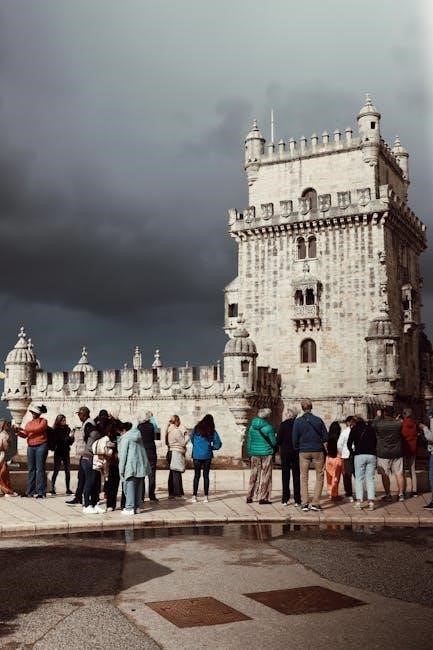
Current Fleet of Russian Military Helicopters
Russia’s 2024 military helicopter fleet includes attack, transport, and specialized models like Mi-28, Ka-52, Mi-24/35, Mi-8/17, Mi-26, and Ka-27/29/31, manufactured by Mil and Kamov.
2.1 Attack Helicopters: Mi-28, Ka-52, and Mi-24/35
Russia’s attack helicopter fleet in 2024 features the Mi-28 “Night Hunter,” Ka-52 “Alligator,” and upgraded Mi-24/35 “Hind” models, known for their advanced weaponry and maneuverability. These helicopters played a significant role in the Ukraine conflict, particularly in counteroffensive strategies, despite facing operational challenges and losses. Their ability to conduct low-altitude missions and deploy precision strikes has been crucial in modern combat scenarios, making them a cornerstone of Russian air support capabilities.
2.2 Transport and Assault Helicopters: Mi-8/17 and Mi-26
Russia’s Mi-8/17 and Mi-26 helicopters form the backbone of its transport and assault capabilities. The Mi-26, the world’s largest helicopter, excels in heavy-lift missions, while the versatile Mi-8/17 handles troop transport, medical evacuation, and cargo delivery. Both models have proven their reliability in various combat environments in 2024, including the Ukraine conflict, where they supported ground forces and maintained supply lines despite operational challenges and sanctions impacting maintenance and readiness.
2.3 Specialized Helicopters: Ka-27/29/31 and Mi-38
The Ka-27/29/31 series excels in specialized roles, with the Ka-27 and Ka-29 focusing on anti-submarine warfare and assault missions, while the Ka-31 provides early warning capabilities. The Mi-38, a modern transport helicopter, offers enhanced payload capacity and range. In 2024, these helicopters supported various operations, including maritime and ground missions. Despite facing challenges like sanctions and maintenance concerns, they remain critical to Russia’s military operations, showcasing their adaptability and enduring utility in diverse theaters.
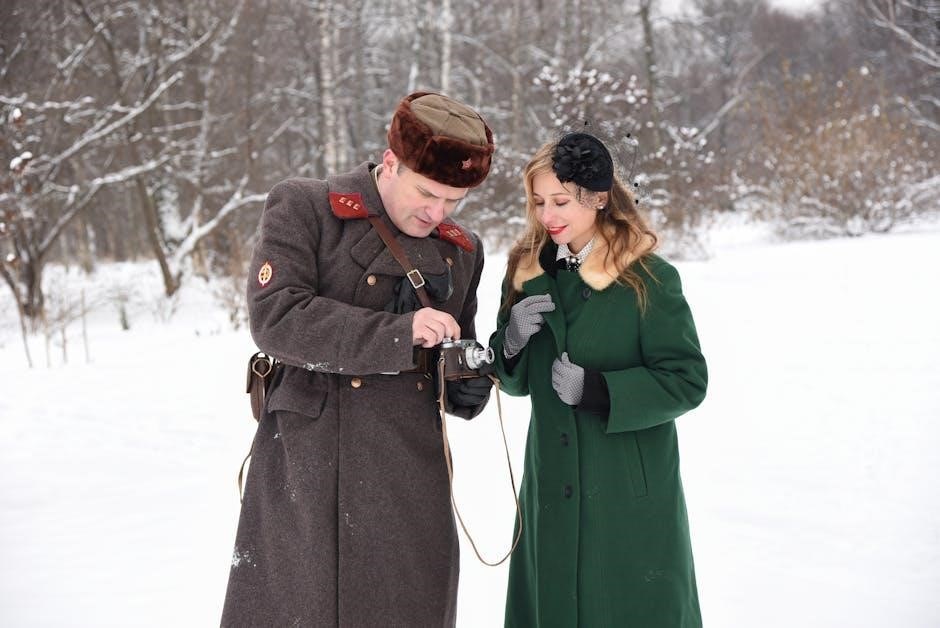
Key Manufacturers and Design Bureaus
Russia’s military helicopter industry relies on Mil and Kamov design bureaus, with Rostec overseeing production and Rosoboronexport managing exports, ensuring advanced capabilities for global defense needs.
3.1 Mil Design Bureau: Pioneers in Heavy-Lift Helicopters
The Mil Design Bureau, renowned for its heavy-lift helicopters, continues to be a cornerstone of Russia’s military aviation sector. In 2024, Mil’s iconic Mi-26, the world’s largest operational helicopter, remained pivotal in transporting heavy equipment and troops. Additionally, the Mi-8/17 series, a versatile workhorse, saw ongoing upgrades to enhance avionics and reliability. Mil’s legacy in designing robust, high-capacity helicopters ensures its critical role in supporting both domestic and international military operations, maintaining Russia’s strategic edge in airlift capabilities.
3.2 Kamov Design Bureau: Innovators in Coaxial Rotor Technology
Kamov Design Bureau, a leader in coaxial rotor technology, continues to innovate with helicopters like the Ka-52 and Ka-27, excelling in attack and special missions. Their designs emphasize versatility, maneuverability, and advanced avionics, making them indispensable for Russia’s military operations. Kamov’s focus on cutting-edge engineering ensures its helicopters remain at the forefront of modern combat and specialized roles, solidifying their reputation as pioneers in rotorcraft innovation.
3.3 Rostec and Rosoboronexport: Driving Export Success
Rostec and Rosoboronexport have been instrumental in promoting Russian military helicopters globally. Through platforms like HeliRussia 2024, they showcased cutting-edge models, securing major export deals. Despite sanctions, these entities leveraged international partnerships, particularly with North Korea and Mali, to expand Russia’s influence. Their strategic efforts have solidified Russia’s position in the global helicopter market, ensuring continued demand for their advanced rotorcraft designs.
Modernization and Advancements in 2024
Russia focused on upgrading its helicopter fleet with advanced avionics and stealth technology. New unmanned systems were introduced, enhancing operational capabilities and addressing modern battlefield challenges effectively.
4.1 Upgrades to Existing Fleet: Avionics and Weaponry
Russia’s military helicopters underwent significant upgrades in 2024, focusing on advanced avionics systems and weaponry. These modernizations aimed to enhance combat efficiency, with improved targeting systems and increased precision in strikes. The integration of new missile systems and electronic warfare capabilities was also prioritized, ensuring the fleet remains competitive in modern warfare. These upgrades were crucial for maintaining operational superiority, especially in contested zones like Ukraine.
Russia introduced cutting-edge technologies in 2024, including stealth capabilities for its helicopters to reduce radar visibility. Unmanned aerial systems (UAS) were also integrated, enhancing reconnaissance and combat missions. These innovations aimed to modernize the fleet and address vulnerabilities exposed in conflicts, ensuring Russia’s aerospace forces remain technologically advanced and operationally effective in future engagements.
4.3 Focus on Reliability and Maintenance
Russia emphasized improving the reliability and maintenance of its military helicopters in 2024. Sanctions and supply chain disruptions necessitated adaptive maintenance programs to sustain operational readiness. Enhanced diagnostic systems and routine inspections were prioritized to mitigate risks and extend service life. These efforts aimed to counter equipment losses and ensure the fleet’s availability for critical missions, despite ongoing challenges in sourcing spare parts and advanced components.
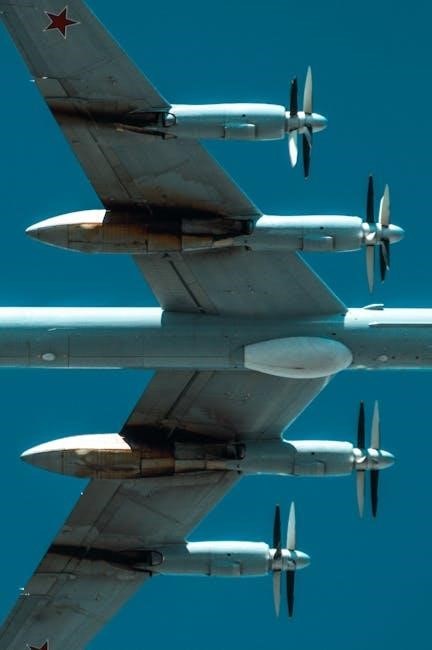
Strategic Role in Current Conflicts
Russian military helicopters played a pivotal role in ongoing conflicts in 2024, facing operational challenges and significant losses while supporting ground forces and counteroffensive strategies.
5.1 Ukraine Conflict: Operational Challenges and Losses
Russian military helicopters faced significant operational challenges in Ukraine during 2024, with Mi-28 and other models suffering losses due to advanced Ukrainian air defenses and drone attacks. The conflict highlighted vulnerabilities in Russian air superiority, forcing helicopters to operate at lower altitudes, increasing risks. Notable incidents, such as the crash of a Mi-28 in Kaluga, underscored these difficulties. These losses compelled strategic adaptations, including enhanced counter-drone measures and revised tactical deployments.
5.2 Counteroffensive Strategies: The Role of Attack Helicopters
Russian attack helicopters, such as the Ka-52 and Mi-28, played a pivotal role in countering Ukrainian offensives in 2024. These aircraft provided close air support and precision strikes, enabling ground forces to regain key territories like Avdiivka. Their ability to operate at low altitudes and employ advanced weaponry proved critical in disrupting enemy supply lines and strongpoints. Despite losses, their strategic impact remained significant, showcasing their enduring importance in modern asymmetric warfare scenarios.
5.3 Lessons Learned and Adaptations
The 2024 conflicts highlighted vulnerabilities in Russian helicopter operations, prompting adaptations. Enhanced stealth technologies and improved maintenance protocols were prioritized to mitigate losses. Integration of unmanned systems and better counter-drone measures were also explored to address modern threats. These changes reflect a shift toward more resilient and technologically advanced rotorcraft, ensuring continued effectiveness in future conflicts while addressing past shortcomings in reliability and operational security.
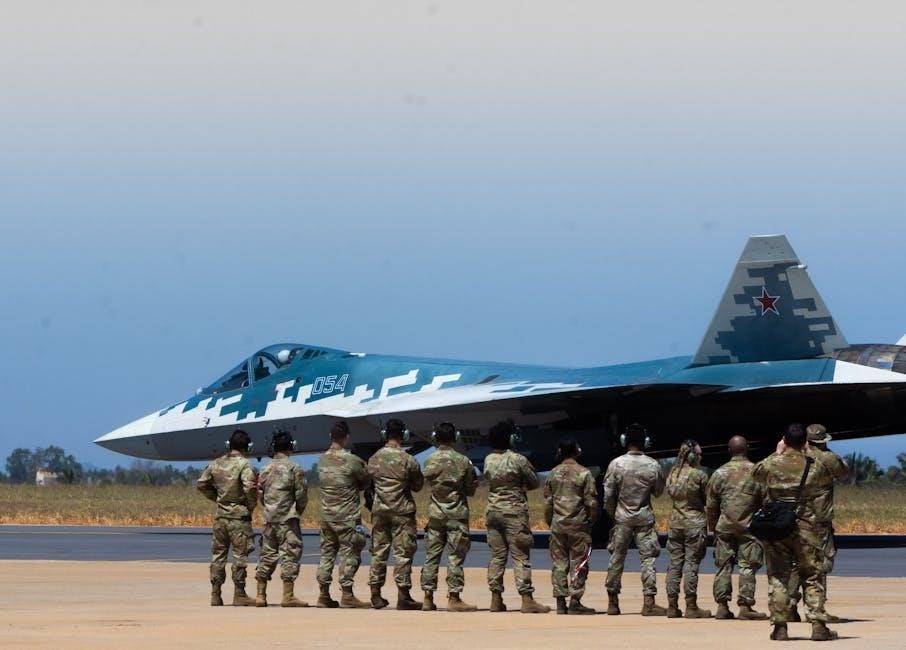
Export and International Partnerships
Russia showcased its military helicopters at HeliRussia 2024, solidifying export deals and strengthening partnerships with nations like North Korea and Mali, highlighting their global defense influence.
6.1 Major Export Deals in 2024
In 2024, Russia finalized significant export deals for military helicopters, including agreements with North Korea and Mali. These partnerships underscored Russia’s strategic efforts to expand its global defense influence. Major deals involved the supply of attack and transport helicopters, reinforcing Russia’s position as a key player in the international arms market. These exports highlighted the enduring demand for Russian rotorcraft, known for their durability and versatility in various combat environments.
6.2 Growing Ties with Countries Like North Korea and Mali
Russia strengthened military ties with North Korea and Mali in 2024, supplying helicopters to bolster their defense capabilities. These partnerships reflected Russia’s strategy to expand influence in Asia and Africa. North Korea received fighter jets and helicopters, while Mali acquired Russian rotorcraft for counterinsurgency operations. These deals highlighted Russia’s role as a reliable arms supplier, especially to nations facing security challenges and seeking cost-effective, battle-proven equipment.
6.3 Participation in International Exhibitions: HeliRussia 2024
At HeliRussia 2024, ROSOBORONEXPORT showcased Russian military helicopters, demonstrating advanced models like the Mi-28 and Ka-52. The event, held in Moscow from June 10 to 12, highlighted Russia’s latest rotorcraft innovations and combat capabilities. It served as a platform to strengthen international partnerships and promote Russian-made helicopters to global markets, reflecting Russia’s commitment to maintaining its position as a leading exporter of military aviation technology.
Challenges Facing the Russian Helicopter Industry
Russia’s helicopter sector faces sanctions, supply chain disruptions, and declining R&D spending, impacting innovation and production capabilities in 2024.
7.1 Sanctions and Supply Chain Issues
Sanctions imposed on Russia significantly impacted its helicopter industry, disrupting supply chains and limiting access to critical components; These restrictions affected production and maintenance, leading to delays in modernization programs. The loss of 129 combat aircraft and over 100 attack helicopters by October 2024 further strained resources. Additionally, international partnerships were challenged, as seen with the Philippines canceling a helicopter deal due to US pressure. Such disruptions underscored the vulnerability of Russia’s aerospace sector in 2024.
7.2 Decline in R&D Spending and Innovation
Russia’s aerospace industry faced a decline in R&D spending in 2024, hindering innovation. Reduced investment in new projects, as noted by the United Aircraft Corporation, raised concerns about developing next-generation helicopters. This decline, coupled with the loss of skilled personnel and technological expertise, jeopardized future advancements. The industry’s ability to compete globally was further compromised, as evidenced by challenges in creating modern, stealth-capable helicopters. This downturn posed long-term risks to Russia’s military aviation capabilities and strategic ambitions.
7.3 Maintenance and Readiness Concerns
Maintenance challenges plagued Russia’s helicopter fleet in 2024, exacerbated by sanctions and supply chain disruptions. Limited access to spare parts hindered routine upkeep, reducing operational readiness. Reports of delayed repairs and cannibalization of components for other aircraft highlighted systemic issues. These problems were compounded by the loss of experienced technicians, further straining the ability to sustain the fleet. The crash of a Mi-28 in Kaluga underscored the risks of inadequate maintenance, raising concerns about the fleet’s overall reliability and combat effectiveness.

Notable Incidents and Accidents in 2024
A Russian Mi-28 helicopter crashed in Kaluga, killing its crew, while another crash occurred in Oryol; Security breaches, including a foiled attempt to divert a helicopter, were reported.
8.1 High-Profile Crashes and Their Implications
In 2024, several high-profile crashes involving Russian military helicopters drew significant attention. A Mi-28 attack helicopter crashed in the Kaluga region, resulting in the loss of its crew. Another incident occurred in the Oryol region, where a military helicopter crashed, raising concerns about maintenance and operational safety. These incidents underscored the challenges facing Russia’s aviation industry, including potential issues with aircraft reliability and the impact of sanctions on spare parts availability. Such events also highlighted the broader strategic implications for Russia’s military capabilities and public confidence in its defense systems.
8.2 Security Breaches and Foiled Attacks
Russia’s Federal Security Service (FSB) foiled a Ukrainian attempt to divert a military helicopter by recruiting its pilot, highlighting vulnerabilities in personnel security. Additionally, a German army helicopter was fired upon by a Russian warship over the Baltic Sea, escalating tensions. These incidents underscore the precarious nature of military aviation security and the proactive measures Russia is taking to counter potential threats, showcasing the volatile geopolitical landscape surrounding its military assets in 2024.
8.3 Impact on Public and Military Confidence
The crashes of Russian military helicopters, such as the Mi-28 in Kaluga and another in Oryol, alongside security breaches, have raised concerns about aircraft reliability and maintenance. These incidents, coupled with high-profile losses in Ukraine, have dented public and military confidence. Morale within the Russian Aerospace Forces has been impacted, while public perception of military capabilities has been questioned, affecting overall trust in the nation’s defense strategies and readiness for future operations.

The Future of Russian Military Helicopters
Russia focuses on next-gen rotorcraft, modernizing existing fleets with advanced avionics, and integrating AI and unmanned systems to enhance combat efficiency and maintain global competitiveness.
9.1 Next-Generation Projects and Developments
Russia is advancing next-gen rotorcraft with modernized avionics, AI, and unmanned systems. Projects focus on stealth tech, enhanced payloads, and improved maintenance for future readiness and global competitiveness.
9.2 Integration with Emerging Technologies
Russia is integrating emerging technologies like AI, unmanned systems, and hypersonic capabilities into its helicopters. These advancements aim to enhance combat effectiveness, improve survivability, and enable real-time decision-making. AI-driven navigation and autonomous systems are being tested to reduce pilot workload, while hypersonic missile integration is explored for future operations. These innovations underscore Russia’s focus on maintaining technological parity and modernizing its fleet for complex, evolving battlefields.
9.3 Long-Term Strategic Goals
Russia aims to maintain its helicopter fleet as a cornerstone of military power, focusing on self-sufficiency and export growth. Long-term goals include advancing domestic production, expanding international partnerships, and ensuring readiness for future conflicts. Despite sanctions, Russia seeks to enhance its global influence through reliable, modernized helicopters. These strategic objectives underscore Russia’s commitment to sustaining its aerospace industry and projecting military strength worldwide, ensuring its helicopters remain critical to national defense and geopolitical strategies.
Russian military helicopters in 2024 demonstrated resilience amid challenges, with modernization efforts and strategic adaptations ensuring continued relevance in global conflicts and international markets.
10.1 Summary of Key Developments in 2024
In 2024, Russian military helicopters faced significant challenges, including losses in Ukraine and supply chain issues. Despite these setbacks, upgrades to avionics and weaponry were implemented across the fleet. The Mi-28 and Ka-52 attack helicopters played pivotal roles in counteroffensive strategies. Export efforts continued, with Rosoboronexport showcasing helicopters at HeliRussia 2024. However, sanctions impacted R&D, raising concerns about future innovations and long-term capabilities.
10.2 Outlook for 2025 and Beyond
Russia’s military helicopter industry faces both challenges and opportunities in 2025 and beyond. Modernization efforts will focus on next-generation models like the Mi-26T2V and Ka-52M, emphasizing stealth and unmanned technologies. Sanctions and declining R&D spending may hinder innovation, but integration with emerging technologies like AI could enhance capabilities. Export strategies will remain critical, with a focus on strengthening partnerships with nations like North Korea and Mali. Long-term sustainability depends on overcoming supply chain and maintenance challenges.
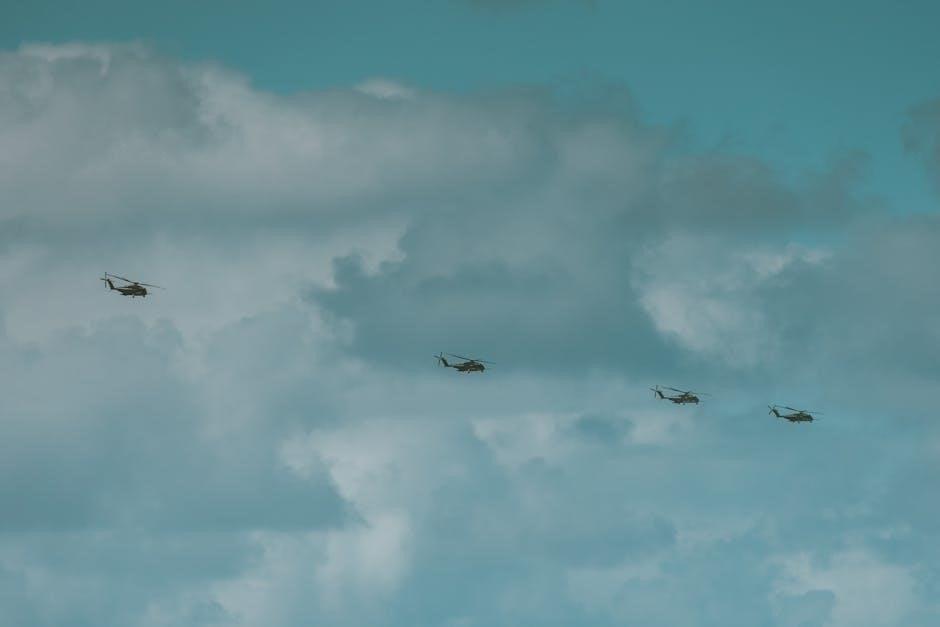
Downloadable PDF Guide
Download our comprehensive PDF guide on Russian military helicopters in 2024, featuring detailed specifications, historical context, and modern advancements. This guide includes insights into current fleet operations, technological innovations, and strategic roles in global conflicts. Perfect for researchers and enthusiasts, it provides a thorough analysis of Russia’s helicopter industry, including export strategies and future developments. Access the full guide to explore the evolution and impact of these aircraft in modern warfare.
